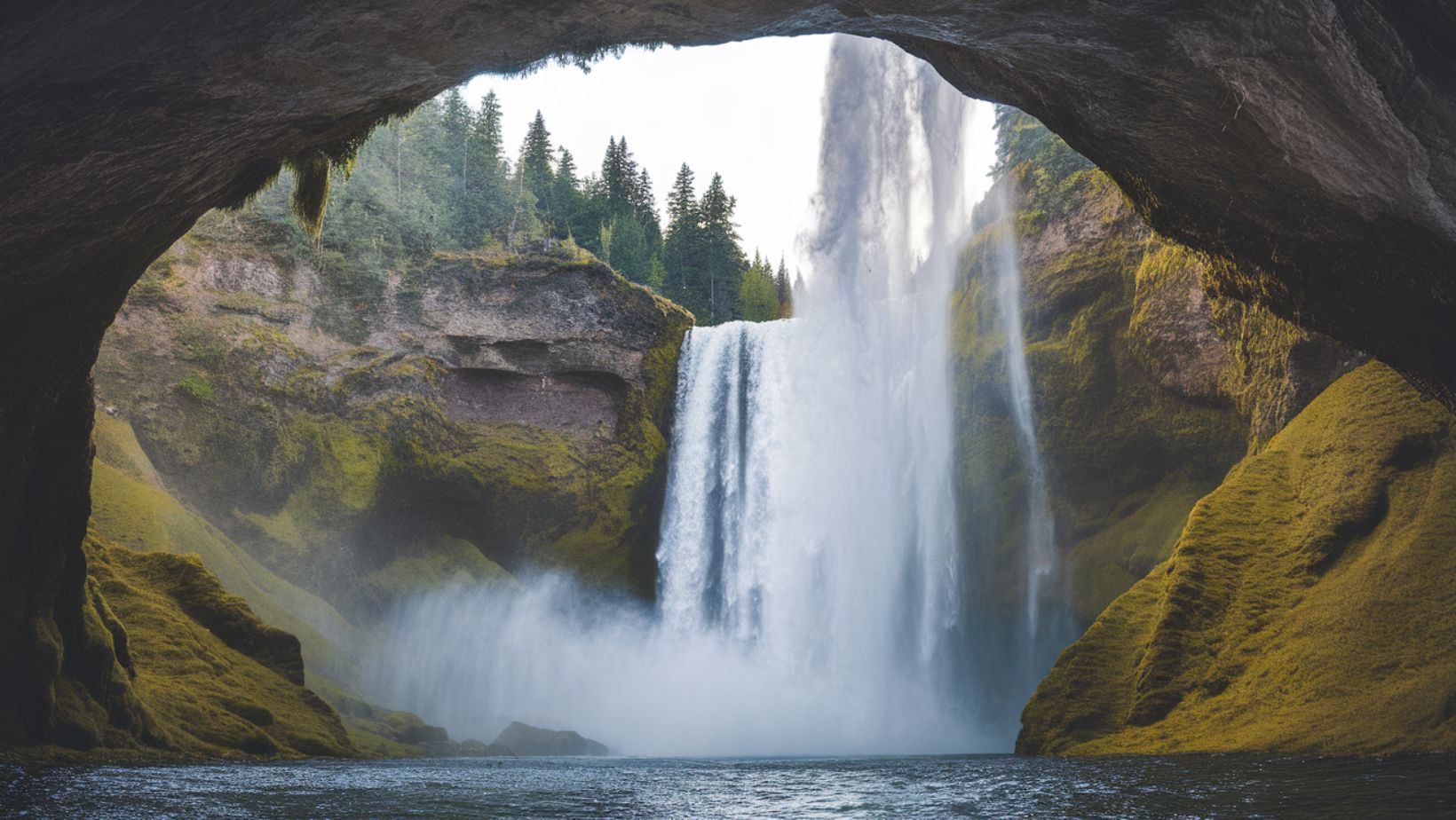What hidden forces created the longest series of cascading waterfalls east of the Mississippi River? How do five distinct waterfalls create perfect conditions for some of Earth’s rarest moss species? Why do botanists consider these falls more significant than their more famous counterparts? Along Virginia’s Blue Ridge Mountains, where water and time have sculpted a natural staircase of unprecedented scale, Crabtree Falls continues to reveal new secrets about life’s persistence in vertical environments.
Crabtree Falls Stands as The Easts Most Impressive Cascade Series
Descending 1,200 feet through five major cascades, Crabtree Falls represents the longest vertical drop of any waterfall series east of the Mississippi. Like other significant waterfalls, each of its five distinct drops creates unique microenvironments. The falls’ total elevation change surpasses that of many western cascades, making it a geological anomaly in the eastern United States.
Rare Moss Species Find Perfect Haven
The falls’ continuous mist and varied rock surfaces create ideal conditions for rare moss species. Similar to how unique cave systems protect specialized life forms, each tier of Crabtree Falls harbors distinct moss communities. Scientists have identified over 30 species of rare bryophytes, making it one of the most significant moss habitats in North America.
Geological Formation Creates Multiple Ecosystems
The falls’ unique structure, carved through ancient metamorphic rock, creates a series of distinct ecological zones. Like isolated island ecosystems, each cascade level supports its own specialized plant and animal communities. The vertical arrangement of these zones provides scientists with valuable insights into how elevation and moisture affect species distribution.
Trail System Provides Progressive Views
A carefully engineered trail system allows visitors to experience each of the five major cascades. Three miles of maintained pathways include overlooks at every significant drop, creating opportunities to observe how the falls’ character changes with elevation. These multiple vantage points also help distribute visitor impact, protecting sensitive ecological areas.
Seasonal Changes Transform Each Cascade Level
Throughout the year, each tier of Crabtree Falls displays distinct seasonal characteristics. Spring brings maximum water flow and the emergence of rare wildflowers, while summer showcases the full diversity of moss species. Fall colors create dramatic backdrops, and winter transforms the falls into a series of ice sculptures, each with its own unique formation patterns.
Scientific Research Reveals New Species
Ongoing botanical studies at Crabtree Falls continue to yield new discoveries. Researchers regularly identify previously unknown varieties of moss and lichens, particularly in the less accessible upper sections. The falls serve as a living laboratory for studying how vertical ecosystems develop and interact.
Conservation Efforts Protect Fragile Communities
Preserving Crabtree Falls requires protecting both its geological features and biological communities. Strict trail guidelines keep visitors from disturbing sensitive moss habitats, while monitoring programs track the health of rare species populations. Educational programs help visitors understand their role in protecting these unique ecosystems.
Hydrological Studies Track Water Patterns
The complex hydrology of Crabtree Falls provides valuable data about how cascading water systems function. Each tier affects water quality and flow patterns differently, creating a natural experiment in stream ecology. Scientists use this information to understand how multi-tiered waterfall systems influence downstream environments.
Photography Challenges Inspire Innovation
Capturing the full scope of Crabtree Falls presents unique photographic challenges. The falls’ vertical extent and varying light conditions require photographers to develop specialized techniques. Each cascade level offers distinct compositional opportunities, from intimate moss details to grand landscape views.
Climate Change Impacts Require Monitoring
The sensitive moss communities of Crabtree Falls serve as early indicators of climate change effects. Scientists monitor changes in species distribution and health to understand how warming temperatures and altered precipitation patterns might affect similar ecosystems. This research helps inform conservation strategies for protecting vulnerable species.
Future Management Balances Access and Protection
Looking ahead, park managers face the challenge of maintaining public access while protecting the falls’ unique biological communities. Plans include developing new viewing areas that reduce impact on sensitive zones, improving educational resources, and implementing advanced monitoring systems to track ecosystem health. These efforts aim to ensure that future generations can experience both the falls’ beauty and its biological significance.
